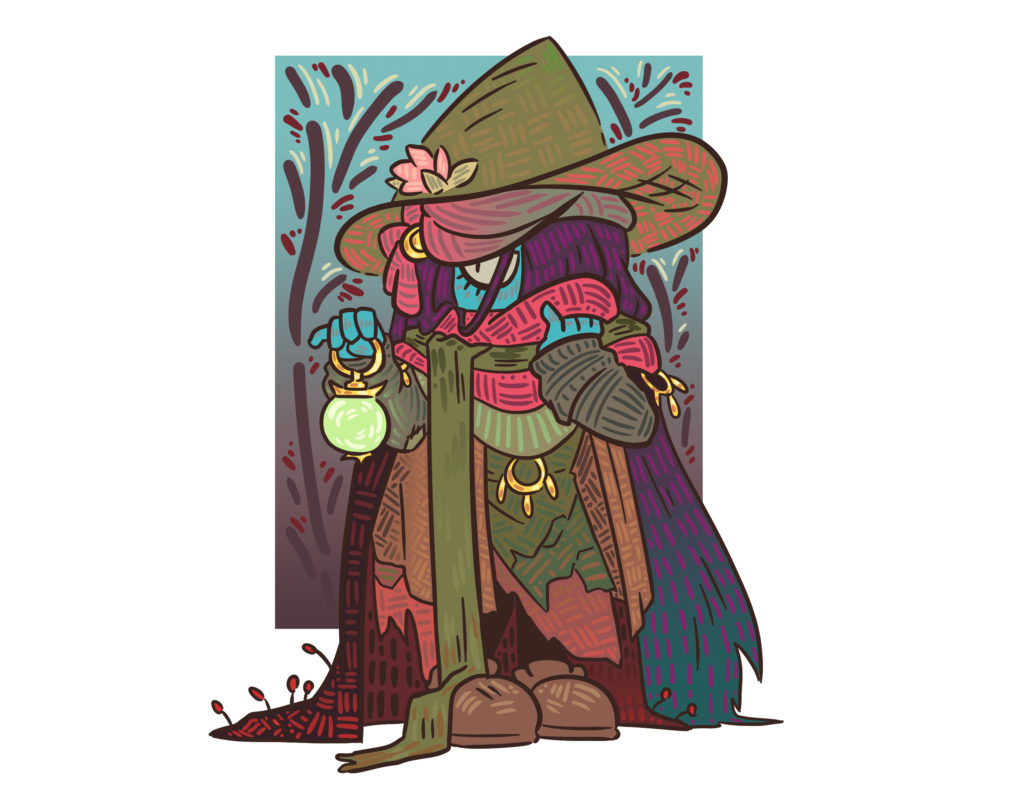My character had the two problems just about any export from Blender to Unreal Engine will have: incorrect scaling, and wrongly oriented bones. It was impossible for me to follow what tutorials I could find for contro rig because of these. I didn’t even discover it was possible to account for these details until I followed a more complex tutorial after having manually rotated each bone to match Unreal Engine’s defaults, and if it weren’t for the fact that I angled one incorrectly, I still wouldn’t have understood what the settings I was inputting meant. I made a humorous recreation of the events as a sort of text-game on Cohost.
If you’re someone struggling with making Inverse Kinematics work on your character without it completely breaking them, try these two things:
Set the unit scale in Blender to 0.01
Make sure the IK node you’re using in UE asks for the axis orientation, and then check where the axes of your bones actually are so you can set that correctly.
My interest in learning control rig came from a thread I saw on Twitter where someone was showing off a model that had a 2D texture swapper rigged for their character’s facial expressions. I looked through the thread for information as to how they did it and came up empty handed, but I did learn that they had a way to animate inside Unreal Engine itself. Importing models and animations from Blender is something I’ve found tedious and challenging for the fact that if animations have problems in-engine, I’d have to go all the way back into Blender, hope an approximate fix will work, and then re-export and import. The chance to skip all of that was enticing, and on cursory searches into what control rig was and how it worked, I found a tutorial where someone had put together the 2D facial animation I wanted, though with little explanation as to how all of it worked. I decided I would definitely learn how to make a rig–it would be simple with the number of detailed tutorials floating around–and my special challenge on top would be to program the face-switcher.
I thought that it would take me about an hour to follow a tutorial and have the basic rig up and running. It took me about two days.
This video, designed more as a showcase of the control rig’s tools than any kind of tutorial, is what I chose to start with, partially because it was an official video from UE and the first result on youtube, but also because it immediately explained how to set up inverse kinematics for rigging legs and it had my coveted facial expression tools that I would eventually have to reverse engineer.
I immediately discovered that my character did not work the way his did, and it did not make any sense to me why.


This video put me on the right track by clarifying to me what was going wrong, and explaining exactly what needed to be fixed and how. The biggest problems were 1. The scale being completely off, and 2. The axis of the bones in the rig skeleton being completely off track from what UE expects. Both were due to little quirks that show up due to Blender and UE not being compatible with each other, but easy enough to fix.
In Blender, you need to set the scene’s unit scale to 0.01 meters, changing it to centimeters doesn’t work. Your character will need to be scaled up 100x or else they’ll be tiny in UE, and the new scale must be applied on both the mesh and the rig.
Bones can be rotated in the “edit” window, and it is the axis rather than visible bone that needs to be pointed in the right direction. What the right direction is varies depending on the bone, it’s best to reference the mannequins inside UE to know what’s correct.
However, that rotating the bones isn’t completely necessary. It’s good for making a fully optimized character, but if you use the right nodes in the blueprints, you can correct for it.
This video, a full and comprehensive tutorial for rigging a character’s entire body, is what I moved onto once I’d lost all faith in my ability to troubleshoot my character. I started following it under the assumption that maybe, just maybe if the rest of things were in place, things would start to work.
It was easy to follow along mindlessly, and would have continued to be if the IK actually didn’t work, even after I fixed the bone rotation. Since it didn’t, I was thankfully forced to pay attention to what the new IK node he used was asking me for. By making the program display how the bones are oriented and inputting which axis to follow in the node, rather than letting UE solve for that itself, you could make any rig for any character function properly.
Previously, my character’s bones had been oriented opposite to what UE expected, so it inverted their foot into their body. At this point, one of the bones had been rotated incorrectly so it was just noticeably offset. That mistake made me pay attention.
At this point, I finally had my character! Rigged and functional! I allowed myself a break of a few days before I tried breaking my brain over this programming I didn’t know how to do again. The confusion that was figuring out how to make faces work will be covered in my next exciting recollection.


Recent Comments